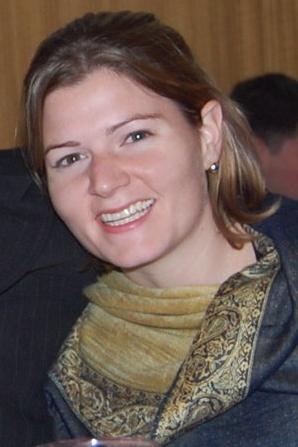 SXSW has been playfully dubbed "spring break for geeks" and having gone this year, I can totally see why. The interactive conference was a unique opportunity for cross-industry learning among 11,000 web geeks from every area of the web. As a nonprofit consultant that bridges the nonprofit and for profit world on a daily basis, I am already attracted to the idea of “Robin Hood” learning (as Katya Andresen might call it) but I couldn't have imagined the mental fireworks that are set off when you put programmers, fundraisers, gamers, designers and entrepreneurs under one roof. Here are a few of the highlights that I took away for nonprofits.
SXSW has been playfully dubbed "spring break for geeks" and having gone this year, I can totally see why. The interactive conference was a unique opportunity for cross-industry learning among 11,000 web geeks from every area of the web. As a nonprofit consultant that bridges the nonprofit and for profit world on a daily basis, I am already attracted to the idea of “Robin Hood” learning (as Katya Andresen might call it) but I couldn't have imagined the mental fireworks that are set off when you put programmers, fundraisers, gamers, designers and entrepreneurs under one roof. Here are a few of the highlights that I took away for nonprofits.
1. Measure your reach not the “get”: With the huge opportunity social media offers to access new audiences in creative ways, it also presents a major “ownership” hurdle that is forcing nonprofits to shift the way they think about traditional acquisition. Danielle Brigida (Social Media ROI Poetry Slam) is leading the National Wildlife Federation’s social media and measuring their efforts not by gaining email addresses but by relationships, striving for at least five new contacts per day. The goal seems to be much more in line with the overall goal of SXSW (and other conferences for that matter), which is not to collect as many business cards or email addresses as possible, but to create authentic connections with people that share a common interest. The email is only one means of maintaining that relationship.
2. Reconsider your value add: Nonprofits that have begun thinking in terms of relationships are approaching online communications the way their entrepreneur friends have to: by considering what they can do to make the relationship better for their customers. As Kathy Sierra (Change Your World in 50 Minutes) says, WOO is better than WOM, meaning word of obvious, or just being better, carries more weight than people talking about that you’re better. "Make it interesting and it will just happen," said Dave Neff of American Cancer Society (Social Media ROI Poetry Slam). Maybe success is as simple as providing something people want. These messages of value add were echoed by Mario Anima of Current TV (From Flickr and Beyond: Lessons in Community Management) who talked about the role of community managers to develop new tools to continue dialogue not just deliver information. Chris Anderson and Guy Kawasaki also shared a keynote dialogue on the topic of adding value.
3. Integrate, integrate, integrate: Just like SXSW embraces integration by allowing the audience to submit questions via Twitter, effective organizations are connecting their online presence and messages. I was really impressed by the National Wildlife Federation, which has developed a sustainable "citizen monitoring program" across a number of online platforms: main site, flickr, YouTube, blogs, and Twitter and I'm sure I'm missing one. The interesting thing about this effort is that it’s not campaign-based, or a spurt of activity for a defined period of time, but actually an ongoing relationship that can continue to build over the long term, again defined by what is valuable to their supporters. This approach allows it to integrate with all of their organization priorities: reach, revenue and engagement.
4. Stop planning, just start. A number of sessions drove home the idea that doing anything online is so cheap and easy that there’s no reason not to try. As evidenced by so many viral videos, really successful ideas are often those with little foresight, like BlogHer, which Erin Kotecki Vest (Building Strong Online Communities) explained was started over lunch by 3 motivated women bloggers. Kathy Sierra put it, “Let your stupidity drive you” and imagine what it would be like if you didn’t know how things are supposed to be. Similarly, Wendy Harman of the American Red Cross (Social Media ROI Poetry Slam) made the point about social media for nonprofits: Try, try, try and then change, change, change. As more and more organizations are looking for help with their social media strategy, the successful organizations are allocating a percentage of their online effort to throwing pasta at the wall and accepting that experimentation is an ok way to start.
*This article was written by Ali Cherry, Online Campaigns and Marketing Director, Beaconfire Consulting and provides executive-level consulting to progressive nonprofit organizations.


COMMENTS